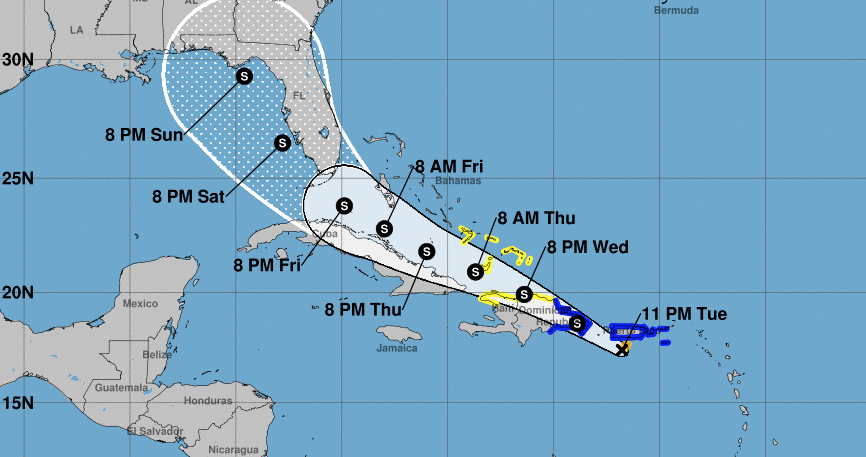August 13, 2021.- After hitting the Dominican Republic, where it left part of the country without electricity, fallen trees, and floods, Fred degraded to a tropical depression and left through Haiti into the Atlantic Ocean before beginning to transit through the north coast of Cuba on Thursday.
According to experts, Fred could re-intensify to tropical storm status as it passed through South Florida on Friday. It would also affect the Bahamas in the next few hours.
Heavy rains continued to hit the island of Hispaniola, shared by Haiti and the Dominican Republic, on Thursday, August 12th, where authorities reported that 400,000 users had lost power and closed part of the aqueducts, leaving half a million without water due to the floodings.
In addition, local media in Santo Domingo reported that 1,700 people were evacuated and that a hundred homes were totally or partially damaged. Three adults and two children were rescued, said the Emergency Operations Center of the Dominican Republic, which until now had no record of deaths.
On Thursday afternoon, the storm had maximum sustained winds of 55 kilometers per hour and its vortex was located about 170 kilometers west of Gran Inagua Island in the southern tip of the Bahamas and about 290 kilometers east of Camagüey, Cuba. reported the Florida National Hurricane Center. It was heading west-northwest at 22 km per hour.
The meteor would drop between 7.5 and 12.5 centimeters of rain in the Dominican Republic and the western Bahamas, as well as between 2.5 and 7.5 centimeters in Haiti, Turks and Caicos, the eastern Bahamas and Cuba.

Fred became the sixth named storm of the Atlantic hurricane season Tuesday afternoon as it passed through the U.S. Virgin Islands and Puerto Rico.
In Cuba, the National Meteorology Center indicated that Fred is expected to continue with a similar course through the seas near the north coast – parallel to the coastline – of the eastern provinces, and on Friday, Fred is expected to sweep the power stations, as it gains intensity and makes its way to Florida.
For Cuba, showers, thunderstorms, and winds are expected, with somewhat strong gusts with speeds of between 40 and 60 kilometers per hour, light swells, and accumulation of water in low areas.
Source: Sipse
TYT Newsroom


